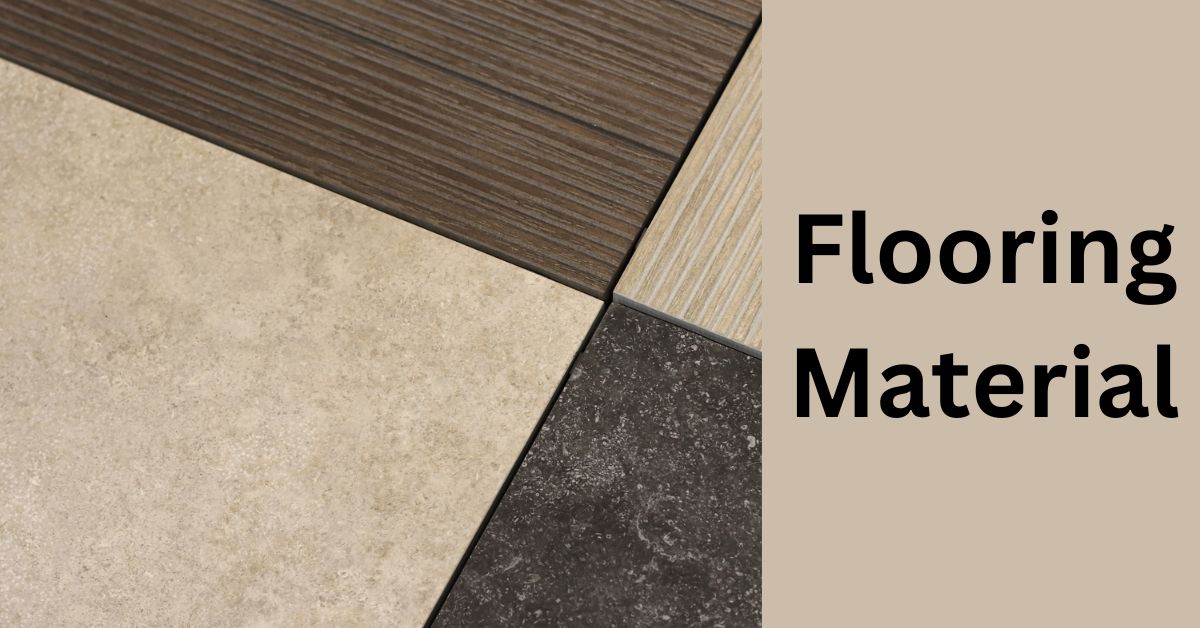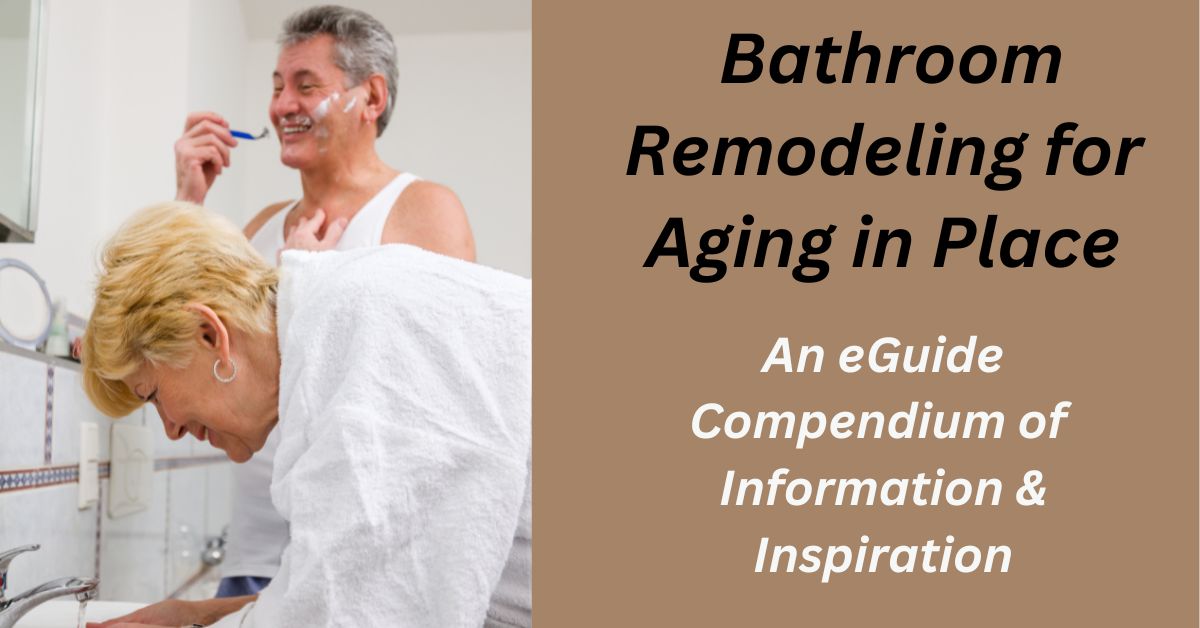Table of Contents
Note: If you came to this post through a random search on flooring material, please click on this parent page and our home page for more context.
Selection of Flooring Material
In this post, we approach the selection of flooring material from the point of view of Universal Design and, by extension, Aging in Place.
Of course, we recognize that for the individual reader, purely aesthetic considerations may well take precedence. And this can override what we have to say here.
But, we have written this to show that there are things beyond aesthetics to take into account when choosing to floor a remodel
Floor slip resistance: Slip resistance is measurable. And it makes a difference whether the floor is wet or dry. We want a surface that is slip resistant even when wet. The manufacturer should have this data.
Ease of movement: We want a floor surface that offers ease of travel for someone with a walker, a cane, or who is in a wheelchair.
Cushion: We want flooring that provides some shock absorption in case of a fall.
Comfort underfoot: We want a floor surface that feels comfortable to walk on. Also, a comfortable surface tends to absorb sound.
Ease of cleaning and low maintenance: We want a flooring surface that is easy to clean and with built-in longevity.
Aesthetics: We want a solution that looks good too.
These factors become more or less important when you factor in the location inside the home. For example, comfort may be more important in the bedroom and living room than elsewhere.
In this case, carpet may be the best choice. But then you have to address the potential trip hazard offered by a transition from carpet to a smooth travel-friendly surface in a hallway.
Let’s consider the pros and cons of the various types of flooring surfaces available.
Carpet Flooring
Pros of Carpet
- A soft surface: This makes it comfortable to walk on and provides some cushion against injury in the case of a fall.: Carpet can be made even softer with the right underlayment.
- A warm surface: this makes it more comfortable under bare feet than tile and therefore appropriate in a bedroom.
- A quiet surface: carpet is pretty much silent underfoot and absorbs sound.
Cons of Carpet
- Bad for travel: Carpet is not easy for wheelchair users compared to tile. And deep pile carpet can present a trip hazard.
- Bad for cleaning: Carpet is hard to clean and must be avoided in wet and dirty areas like bathrooms and kitchens.
- Bad for air quality: Carpet fibers harbor dirt and allergens. And some carpeting may emit VOCs.
- Susceptible to wear and tear.
- Related post: Indoor Air Quality & VOCs
- Related post: Air Quality at Home
Cork Flooring
Pros of Cork
- Relatively soft: Offers some cushion against falls. It is quite easy underfoot and is fairly sound absorbent.
- Smooth surface: This makes it easy to travel. No trip hazards.
- Relatively easy to clean: It is easy to clean so long as the surface sealant is intact.
Cons of Cork
- Prone to damage: Because it is a soft and non-monolithic material, cork is highly susceptible to damage. It is easy for standing water to get into the seams of the cork tiles or planks and wreak havoc with the bonding to the subfloor.
Linoleum Flooring
Linoleum is really old school and has been largely supplanted by vinyl. But linoleum is still around and people like it mainly because it is “green.” Linoleum contains a mix of linseed oil, cork, jute, wood flours, and resin.
Pros of Linoleum
- Durable: Linoleum is resistant to wear and water and with care can last 40 years.
- Easy installation
- Available in a wide variety of patterns and colors
- No VOCs: Linoleum does not emit VOCs
- Easy travel: Linoleum is smooth and easy for walkers and wheelchairs to travel over
- Easy to clean
Cons of Linoleum
- Relatively expensive compared to vinyl
- Relatively soft and susceptible to mechanical damage
- Not as hard as tile but provides very little cushion
- Quite cold underfoot
Luxury Vinyl Flooring
Note we need to distinguish between the single-layer regular vinyl and the higher-end version known as Luxury Vinyl Flooring (or LVF). Regular vinyl is cheaper and thinner. LVF has a completely different construction, which utilizes lamination.
Pros of Vinyl Flooring
- Durable: vinyl is similar to linoleum in durability and will last a long time.
- Low maintenance and easy to clean
- Water resistant: vinyl is virtually waterproof except for the seams between tiles or planks. Penetration by standing water can cause issues with the attachment of the material to the subfloor. and laminations within the vinyl (in the case of LVF). However, this is not a problem if you use sheet vinyl to cover large areas of the floor.
- Affordable: vinyl is a relatively inexpensive flooring option. Even LVP is less expensive than wood flooring or even carpet
- Good looking (in the case of LVF). It is a very effective mimic of wood and stone flooring.
- Some LVP flooring is made with a padded layer making it resilient and comfortable to walk on.
Cons of Vinyl Flooring
- Regular vinyl looks and feels like plastic.
- Regular vinyl is (except for some LVF) a hard surface and unforgiving of falls, although not as hard as tile or stone.
- Susceptible to fading in the sun over time
Rubber Flooring
Pros of Rubber
- Safe because it is shock and slip resistant. This is why it is used extensively in gyms.
- Durable and resistant to mechanical damage
- Good sound absorption.
Cons of Rubber
- Flammable: rubber is not flame or heat resistant
- Off-gassing: rubber is a high emitter of VOCs
- Susceptible to damage from standing water seeping into seams to the subfloor
- Expensive
- Limited in style and color
Hardwood Flooring
Hardwood flooring encompasses hardwood, laminate, and bamboo options.
Pros of Hardwood
- Presents a natural look and ambiance. It looks great.
- Generally easy to maintain and keep clean
- Laminate flooring is cheap. It has a great look but is cheap for a reason.
Cons of Hardwood
- Relatively expensive to buy and install
- Hard with no sound adsorption. Unforgiving of falls.
- Susceptible to damage by standing water
Tile and Stone Flooring
Pros of Tile and Stone
- Looks beautiful
- Hard-wearing and easy to maintain
Cons of Tile and Stone
- Standard tile can be very slippery when wet. Honed tile does provide some friction.
- Hard and unforgiving of falls
- Cold underfoot
- Relatively expensive
- You have to be careful to avoid stone that can stain (such as marble)
- Related post: Aging in Place
Conclusions on Flooring
Ok. So let’s get down to some recommendations, while acknowledging that everything is a matter of personal preference and compromise. But for our purposes here (flooring for aging in place), it starts with a process of elimination.
What We Rule Out
First, we would rule out the ultra-hard surfaces of tile and stone. We would also tend to rule out linoleum, standard vinyl, wood, and laminate flooring too because they are all so hard.
Second, we would rule out rubber flooring because it is unattractive and off-gassing.
That Leaves Carpet and LVF
Obviously, you can’t install carpet throughout the house because it simply does not work for bathrooms, kitchens, and hallways.
Now you could put LVF throughout the house with great functionality. And if we were faced with a single “either-or” choice, we would definitely go with LVF throughout and call it a day. We would also pat ourselves on the back because this is a relatively inexpensive option.
But then you run into the desirability of comfort underfoot in the bedrooms and aesthetics in the living room and, to a lesser extent, other rooms. We are then faced with compromising between what is safe and what the senior is actually prepared to live with.
So, we compromise but with safeguards. Here are two compromise recommendations:
1: LVF throughout but with carpet in the bedrooms, a well-installed transition between carpet and the LVF in the hallway, and well-secured accent rugs in the bedrooms and other living areas.
2: LVF throughout but with well-secured accent rugs as desired.
Making Rugs Safe for Seniors
No rug is totally safe. So we do what we can to reduce the risk of a fall resulting from the presence of a rug. This is how:
- Low profile rug: look for rugs with a profile of no more than one-quarter of an inch
- Rugs with a low pile: you want a dense pile that is looped.
- Rugs with a dense pile: This is a rug with a very firm feel that supports balance.
- Heavy rug: If you have followed 1 – 3, the rug will be heavy and therefore stable and tend to stay in place.
- Use a non-slip rug gripper to prevent the rug from sliding around.
- Use rug tape to secure the corners of the rug.
By the way, our compromise solutions are good for everyone, not just seniors. But at the same time, we acknowledge that many people will let aesthetics rule their flooring choices. And that is totally fine.





Leave a Reply